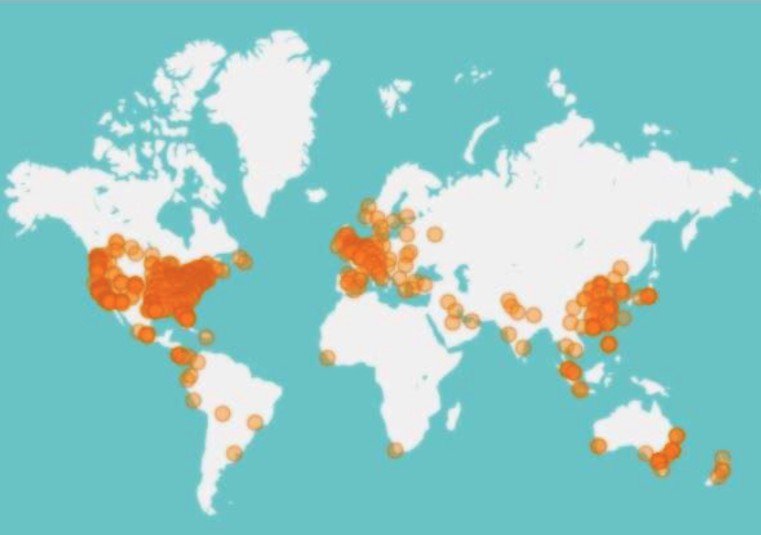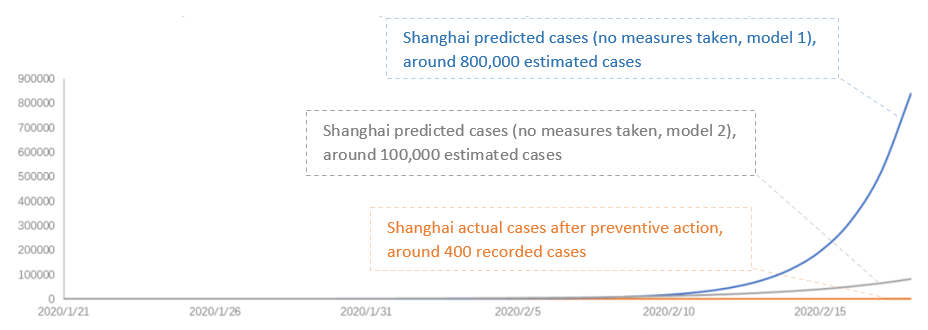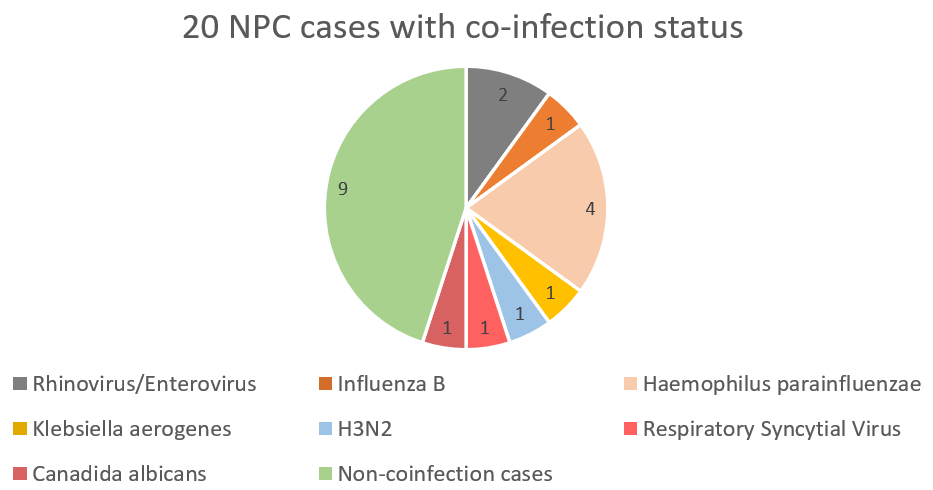Since the beginning of 2020, COVID-19 started spreading around the world and became a big challenge in our everyday lives. We all need to adjust to the rapidly developing situation and follow effective measures to control the global pandemic. Let’s learn together about what to do from the scientists and healthcare professionals at the frontline.
On Mar 25, 2020, a webinar “COVID-19 clinical treatment and research experiences, with Dr. Zhang Wenhong[1]” was hosted by the Chinese American Biopharmaceutical Society (CABS). It attracted more than 10,000 healthcare and life sciences professionals from around the globe (the audience location map below).

The summary of the current knowledge on COVID-19:
1) The most effective management of the spread of COVID-19 pandemic is through early control of local transmission. The actual cases of COVID-19 infection recorded in Shanghai were one thousand times lower than prediction via a model. The dramatic decrease between expected and recorded cases can be explained by early preventive action adopted by Shanghai.

2) Symptoms of early stage NCP (novel coronavirus pneumonia) are similar to other viral pneumonias.
3) There are two ways of diagnosing COVID-19. The first one is by a clinical confirmation from a CT scan, the second is by a laboratory confirmation from a deep throat saliva test. Because the specificity of the chest CT is relatively low, currently the golden standard is a RT-PCR or metagenomics sequencing of a respiratory specimens. In the laboratory-confirmed cases, 15% of the samples tested negative first time round but tested positive when re-tested, while another 15% of the specimens tested negative both time using RT-PCR but were positive when tested by metagenomics sequencing. Repeated sampling increased the number of identified positive cases, and especially when clinical symptoms where were also included.
4) Virus co-infection, that is infection by different viruses at the same time, may be the common phenomena in winter pneumonia cases. Thus, positive test for common pathogens cannot be used as exclusion criteria for COVID-19 during unexplained pneumonia diagnosis.

So what should you do?
1) Maintain social distancing
2) Wear surgical masks in public
3) Maintain regular daily schedule:
a. Keep appropriate and healthy diet
b. Have enough and high-quality sleep
c. Do regular in-house exercise and join online exercise courses
4) Don’t panic and stay positive
a. Simplify your daily life, only purchase the goods you need
b. Develop hobbies, such as cooking, painting, calligraphy, and yoga
c. Promote positive interactions within your family and keep harmonious family atmosphere
5) Keep good personal hygiene and maintain routine cleaning of common surfaces (phone, card, wallet, key, door handle etc.) with 3-6% hydrogen peroxide or 75% alcohol
[1] Dr. Zhang Wenhong is the Director of Department of Infectious Disease, Huashan Hospital. Fudan University, and the heading physician in the COVID-19 expert team in Shanghai

